In networking, QoS classification and marking are the foundations of traffic prioritization. Classification helps you identify and group different types of traffic. Marking assigns values that determine how the network treats that traffic.
Classification is the process of identifying and organizing traffic into distinct classes.
For example, you might decide:
"This traffic is critical for our business."
"This traffic is not urgent and can wait."
"This traffic is unrelated to business operations and should have the lowest priority."
In our example, traffic is divided into four classes:
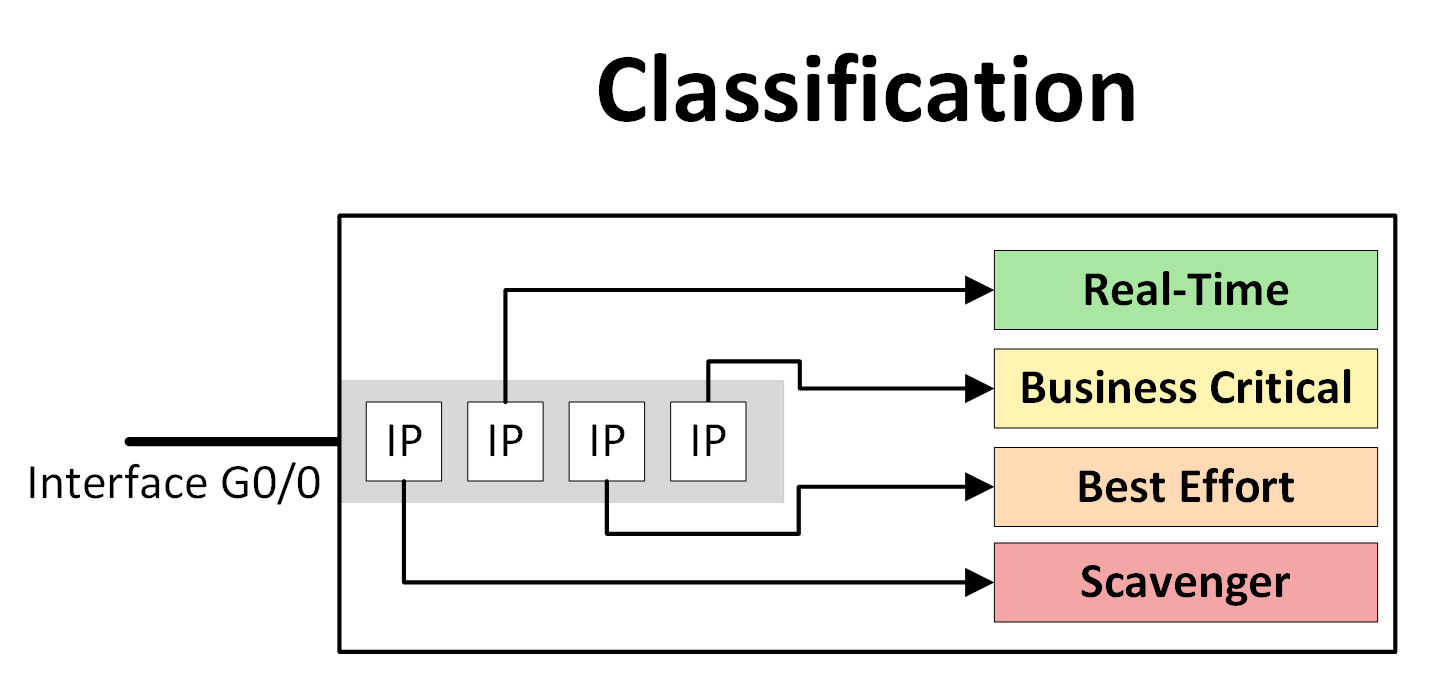
Figure 1 – Traffic Classification
The diagram below shows how traffic coming into interface G0/0 is sorted by priority:
Real-Time: Ensures smooth delivery of Voice over IP (VoIP) and video traffic.
Business Critical: Prioritizes essential business services like server or application traffic.
Best Effort: Handles standard traffic without any special priority, such as web browsing or emails.
Scavenger: Low-priority traffic, typically entertainment or non-business-related activities.
Classifying traffic helps manage the network better. It makes sure important operations come first. This way, less critical tasks won't impact them.
Answer the question below
Which traffic class is considered low priority?
Why close to the source? Classifying and marking traffic near the source helps prioritize it correctly when it enters the network. This avoids unnecessary delays or mismanagement of resources further along the packet's journey.
How to Classify Traffic
Traffic classification can be achieved using various methods. Here are the two most common approaches:
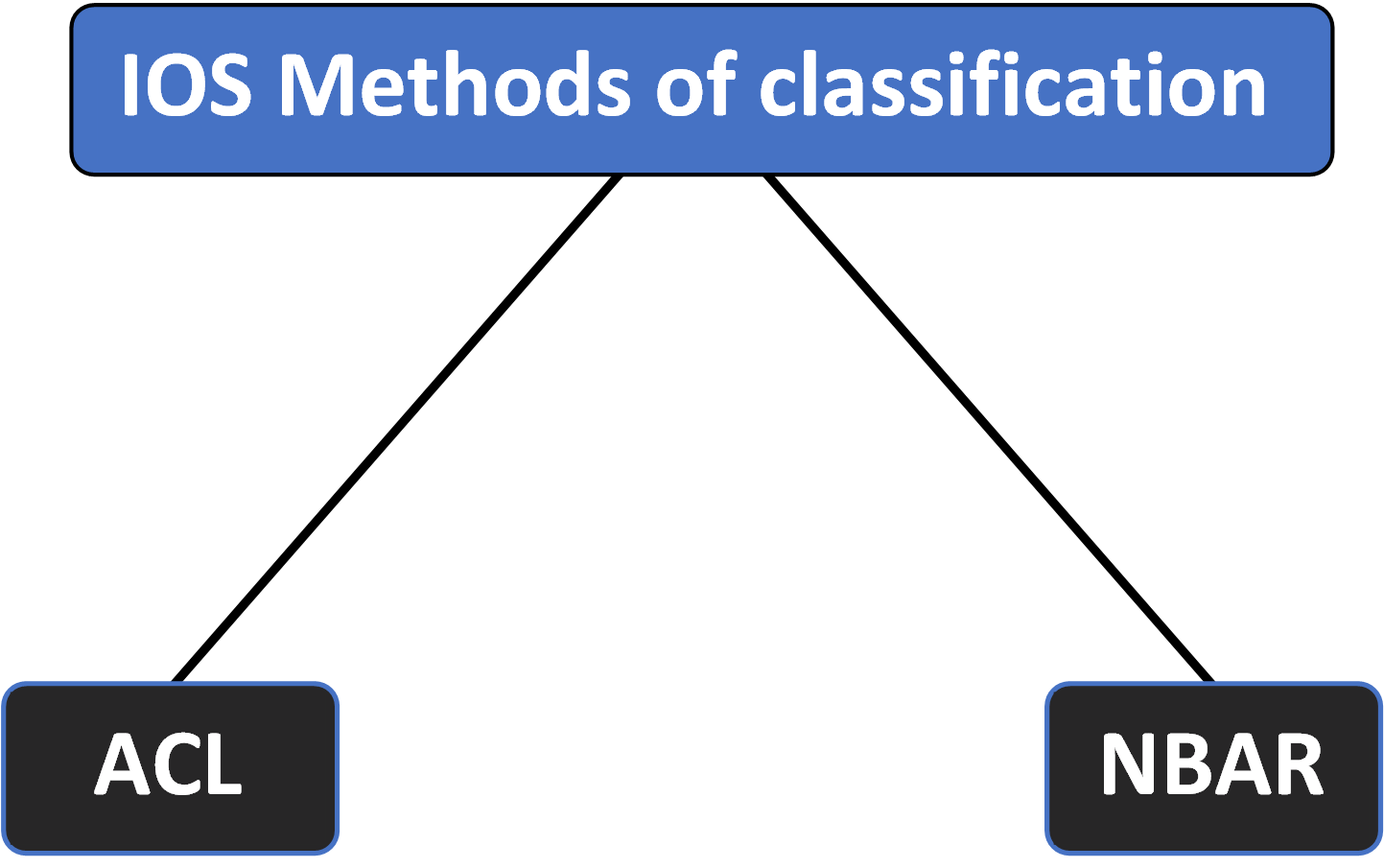
Figure 2 – IOS Methods of Traffic Classification
Using ACLs (Access Control Lists):
ACLs define rules to identify specific types of traffic on a network device.
For instance, you could create an ACL to classify traffic originating from a subnet hosting critical servers, ensuring that this traffic receives higher priority.
Using NBAR (Network-Based Application Recognition):
NBAR employs deep packet inspection to identify traffic by applications, protocols, or services.
This method is particularly useful when traffic patterns are complex or involve a variety of applications.
Answer the question below
Which classification method uses deep packet inspection?
Once traffic has been classified into different classes, the next step is marking.
This means giving each class a specific value. This helps network devices find and prioritize traffic based on the value in the packet header.
Marking Using Values
Below is an example where traffic is assigned specific values. (If you're not familiar with these values yet, don’t worry! We’ll cover them in detail later in the course.)
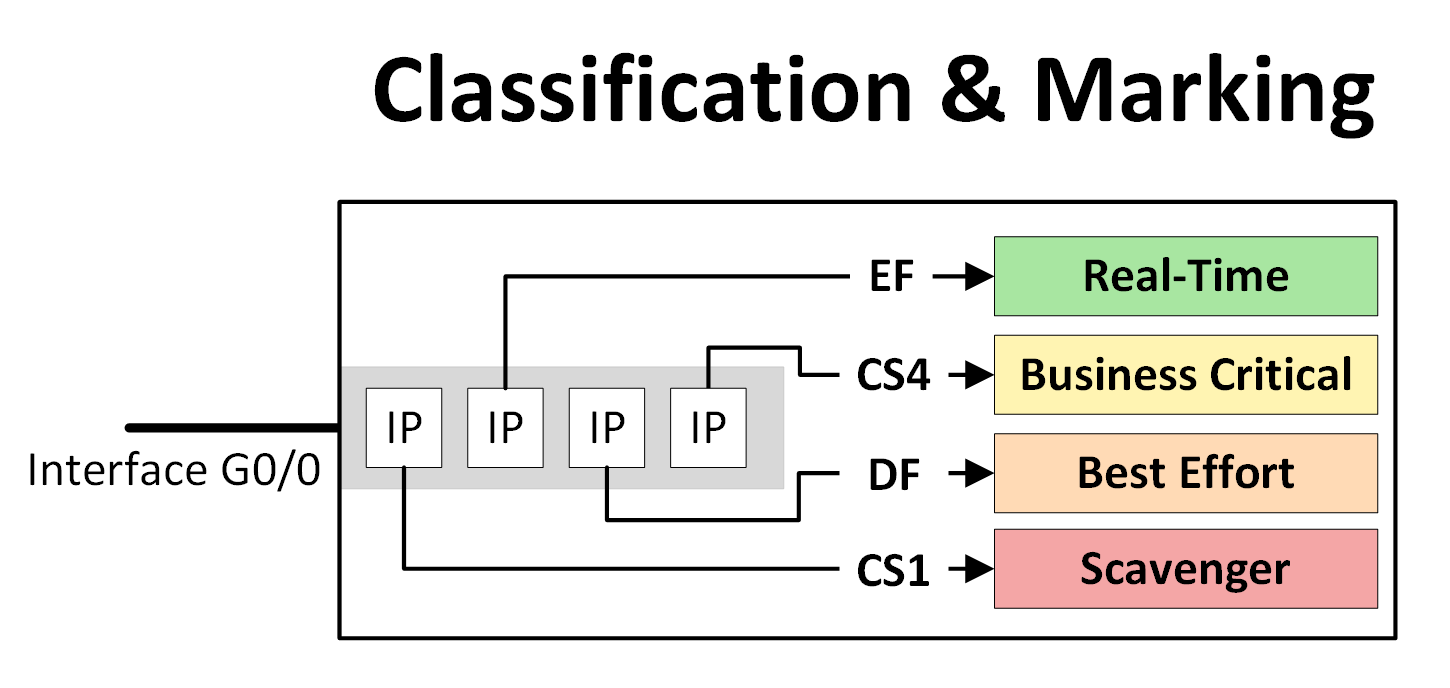
Figure 3 – Classification & Marking
After a packet is marked, routers and switches just read the marking value. This tells them the traffic’s priority without needing to reclassify it.
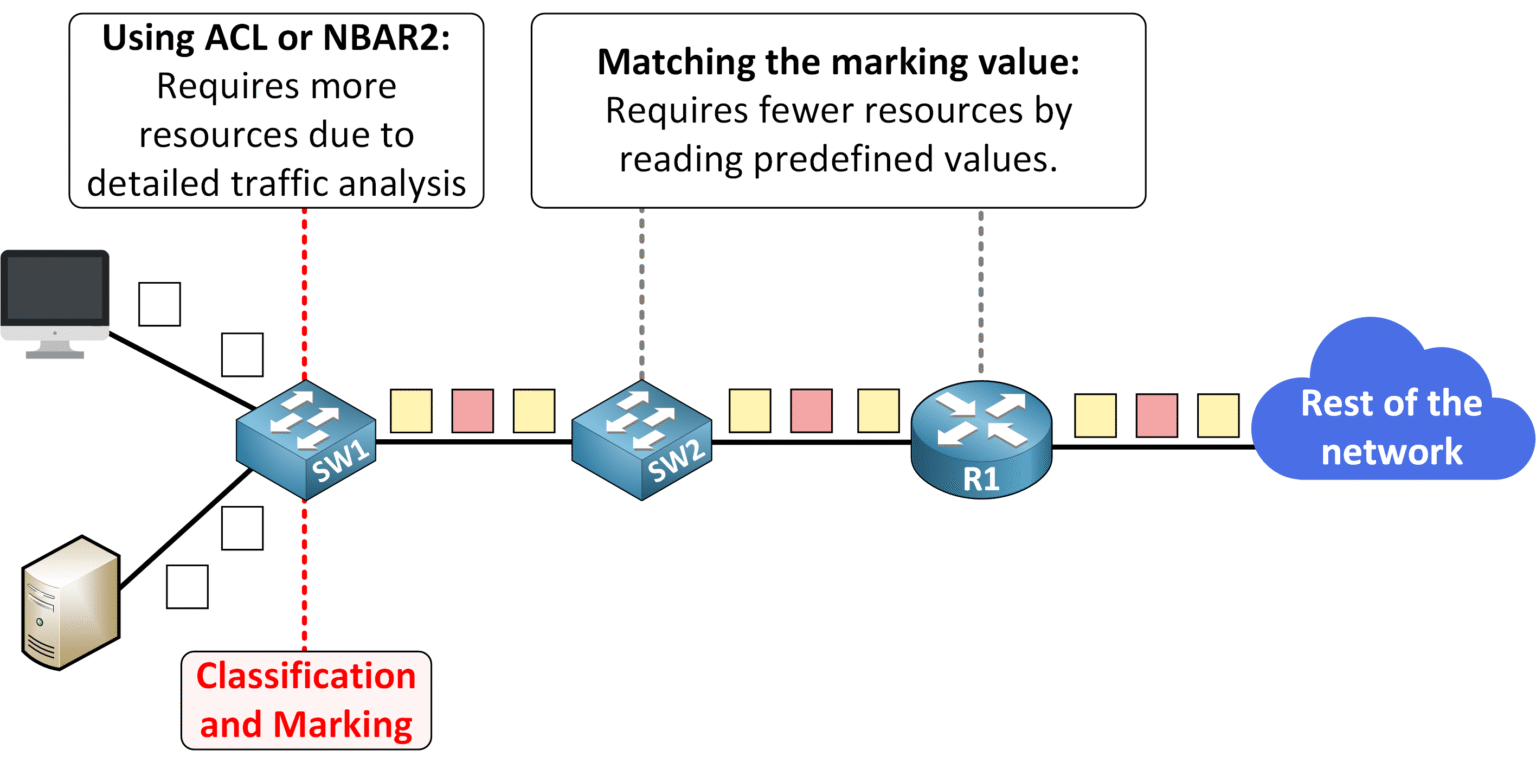
Figure 4 – Marking vs Matching
Methods of Marking Traffic
To implement marking, various methods can be used depending on the layer:
Layer 2 Marking (Data Link Layer)
Layer 3 Marking (Network Layer)
Let’s start by exploring Layer 2 Marking in detail!
Answer the question below
Which marking method adds priority at the Network Layer?
What is PCP?
PCP (Priority Code Point) is a 3-bit field in the 802.1Q tag found in Ethernet frames.
It is used for Layer 2 QoS marking, allowing devices to categorize and prioritize traffic directly at the Ethernet frame level.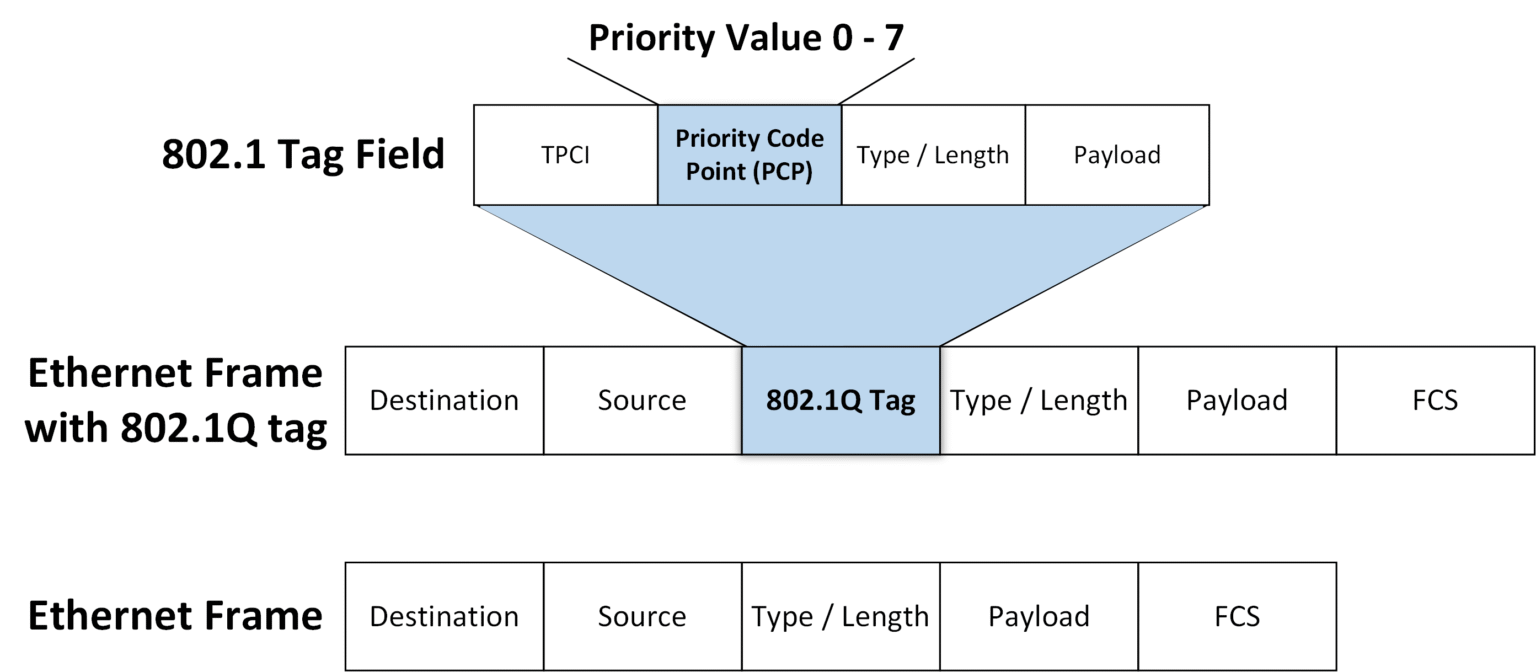
Figure 5 – PCP Field in 802.1Q for Layer 2 Marking
Understanding PCP Values
CoS uses 3 bits, allowing for 8 possible values (0–7). However, Cisco reserves values 6 and 7 for internal use by network control protocols, such as routing updates or OSPF. These values are key. They make sure routing protocols get top priority, free from other traffic interference.
40 % Complete: you’re making great progress
Unlock the rest of this lesson
If you’d like to continue your CCNA journey, simply create your free account.
Access all CCNA lessons
Practice with hands-on labs
Train with Practice exams and Quizzes
Progress tracking in your dashboard
Made by network engineers - CCNP certified
learners globally
Classification and Marking
QoS classification and marking are the foundations of traffic prioritization in networking. This lesson shows you how to identify, group, and tag traffic so that critical applications like voice and video always get the bandwidth they need.